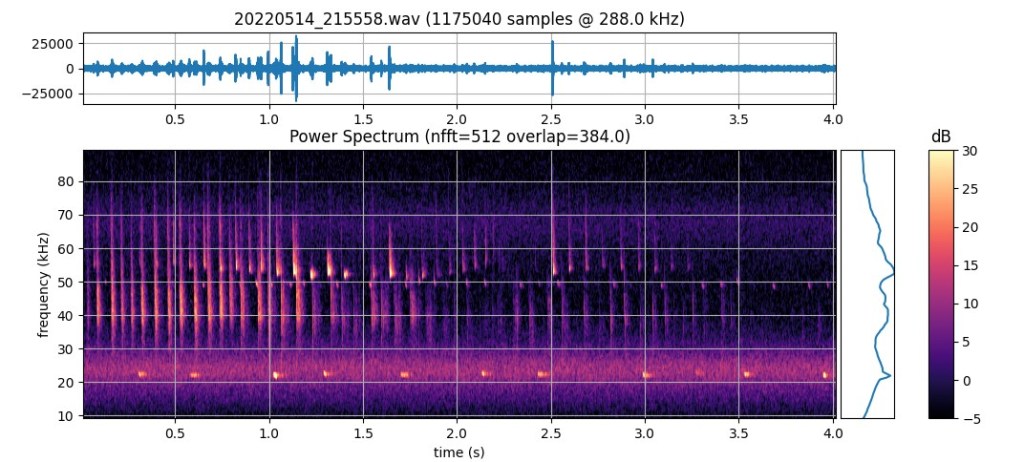
The flooded former gravel pits between Abingdon and Radley provide a haven for a wide variety of wildlife. If you take a seat near the edge of Thrupp Lake just after sunset on a warm evening, you are likely to glimpse bats flitting past. In and around the trees are pipistrelles and noctules, and Daubenton’s bats can be seen low over the surface of the water.
A bat detector can help you decide what bat species you are seeing. There are different kinds of bat detector, but they all provide a way to visualize or hear the ultrasonic sounds that bats use to locate insects and communicate with each other.

Noctules are quite large bats, and have relatively low pitched and infrequent echo location calls. You can see them at around 23 kHz in the spectrogram. Often they alternate higher and lower pitched calls resulting in a “chip chop” effect when heard in a heterodyne detector. In this example, only the “chip” is present, suggesting that the bat was flying amongst trees. Their calls are very loud, so they can be detected from a distance.

Pipistrelles are small, highly agile bats, and the most common British bat. A characteristic of their echo location calls is a rapidly descending “chirp” with a well defined lower ending point. The frequency of the ending point indicates which of the three British pipistrelles are present. In this case, a soprano pipistrelle (low fifties kHz range) and a common pipistrelle (below 50 kHz, a little fainter) are present. Their calls are more frequent than noctule calls.
Daubenton’s bats (sometimes known as water bats) fly low over the surface of the water in broad curves, and catch insects close to the surface, or even on the surface. They a member of the myotis family, whose echo location calls characteristically have a wide frequency range. In this case, the range extends from above 80 kHz to below 30 kHz. The calls are very frequent, in this case around 14 per second. Myotis bat calls are hard to tell apart. In this case, the Daubenton bat was confirmed by sight, using a torch pointed across the water.